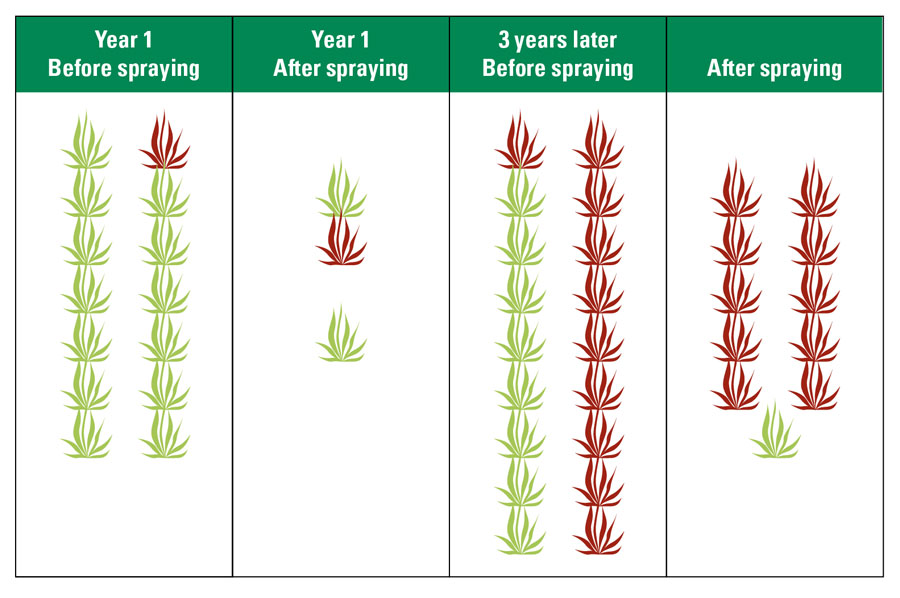Australian growers face an increasing challenge to manage resistance of agricultural chemicals (herbicides, fungicides and insecticides). In the grains industry, 32 weed species, eight fungal pathogens and eight invertebrate pests are known to have evolved resistance to one or more chemical groups.
Australia is second only to the US in its number of resistant weed species, with weeds such as annual ryegrass, wild radish and common sowthistle posing the greatest challenge to growers. New cases of insecticide resistance were recently detected in redlegged earth mite and green peach aphid. Fungicide resistance has evolved for pathogens such as powdery mildew in wheat and barley, net and spot type of net blotch in barley and is now emerging in Septoria tritici blotch in wheat and blackleg of canola.
 Dr Ken Young, Senior Manager biosecurity and regulation GRDC. Photo: GRDC
Dr Ken Young, Senior Manager biosecurity and regulation GRDC. Photo: GRDC
Modern agriculture has benefited from the introduction of agricultural chemicals, but weeds, insects and diseases are genetically programmed to survive. Mutations in populations occur naturally. When any control tactic, including chemicals, is used repeatedly on a population, selection pressure allows these resistant individuals to survive and reproduce.
A multi-pronged solution using non-chemical integrated pest management (IPM) techniques augmented by the use of chemicals with different Modes of Action (MoA) has proven effective in managing resistance.
When any control tactic, including chemicals, is used repeatedly on a population, selection pressure allows these resistant individuals to survive and reproduce. GRDC research is helping growers tackle this resistance to agricultural chemicals on farm.
Tackling resistance
GRDC is committed to helping growers manage resistance. It is investing in research to better understand the biological mechanisms of how resistance evolves in specific pests and what paddock practices, be they chemical, agronomic, mechanical or genetic, are effective at reducing the numbers of these pests.
Research is being conducted to better understand the biology and life cycles of pests to find weak spots where effective management can be implemented. Australia is leading the world in harvest weed seed control, a technique that is highly effective in reducing the number of weed seeds carrying over to the next season.
GRDC is also ensuring growers have access to detailed information on IPM through a series of resistance-management strategies. These strategies are designed to bring together research on all methods of control to provide growers with a broad range of options to prevent or overcome resistance.

Selection pressure allows the proportion of resistant individuals to increase. Photo: Integrated Weed Management Manual (2014) GRDC.
Empowering growers
The GroundCover™ Resistance Supplement, published in March-April 2019, has been led by Dr Paul Umina (cesar) on behalf of the National Insecticide Resistance Management working group. It empowers growers with information about how resistance works and why specific management approaches are recommended based on knowledge of resistance.
While some commonalities exist between weed, disease and insect pest resistance, there are also important differences. These are highlighted in articles focusing on the principles of resistance and the subtle differences in management approaches. Resistance labelling and terminology are explained and there are specific articles on tackling fungicide, insecticide and herbicide resistance.
The list of known resistant pests is presented in the publication and, to help growers understand potential risks, there is a list of Australian fungal pathogens that are known to have developed resistance elsewhere in the world.
Further information on managing resistance in grain crops in Australia can be found on the CropLife Australia website.
More information: Dr Ken Young, GRDC, senior manager biosecurity and regulation, 02 6166 4500, ken.young@grdc.com.au; GRDC Integrated Weed Management Manual (2014)

























































